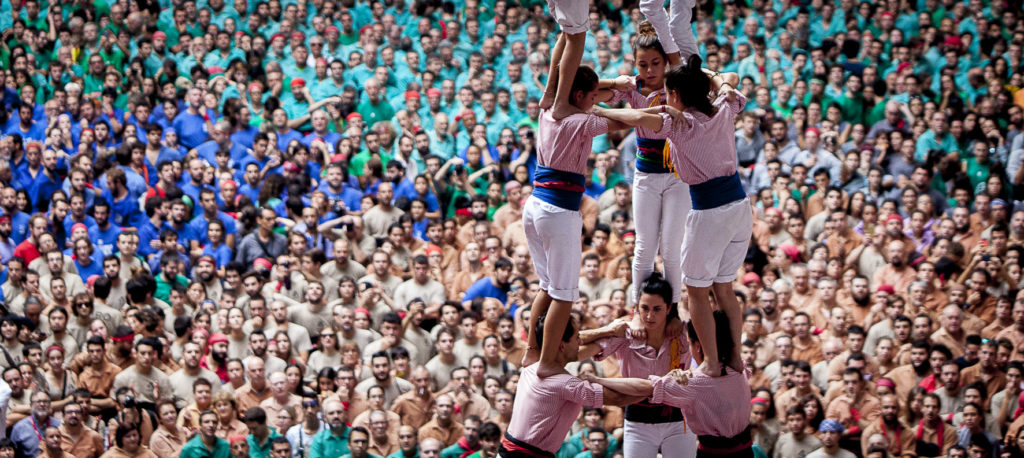06.10.2018 - 07:31
|
Actualització: 06.10.2018 - 09:31
If you want to experience the truly authentic Catalan tradition of human towers (“castells”) at its peak, you should head towards Tarragona this weekend. There you will find hundreds of “castellers” ready to climb one upon each other up to ten levels high, building some of the most original and impressive human constructions you have ever seen. Human towers are a symbolic way to show the ability to come together for a common cause.
Every two years, the city of Tarragona hosts the Human Tower Competition, an event with the participation of the best 42 teams (“colles”). While during the human tower season, all teams build their constructions for the pleasure of it and for the show, this weekend in Tarragona all the towers are scored according to their difficulty. This means that the leading teams compete against each other to achieve the first place in the final classification.
The competition takes place at the Tarraco Arena Plaça of Tarragona, an old bullring reconverted into event and concert venue, since bullfighting has been banned in Catalonia since 2010. This happens to be the same year in which human towers were declared Cultural and Intangible Heritage of Humanity by the UNESCO. Around 6.000 spectators will attend the competition, which also enjoys wide coverage in Catalan and international media. Two years ago, RedBull produced a large series of high quality videos from the competition.
The 12 top “colles” performing on Sunday are the following: Castellers de Sabadell, Colla Joves Xiquets de Valls, Castellers de Sants, Castellers de Sant Cugat, Castellers de Vilafranca (winners of last edition), Capgrossos de Mataró, Castellers de la Vila de Gràcia, Colla Jove Xiquets de Tarragona, Xiquets de Tarragona, Marrecs de Salt, Colla Vella dels Xiquets de Valls and Castellers de Barcelona.
Valls, the birthplace
The town considered to be the cradle of human towers is Valls, a city in the south of Catalonia close to Tarragona. We know that already back in 1805, two rival groups were making human towers, the farmers and the craftsmen, which eventually evolved into the two groups known today as the Colla Vella dels Xiquets de Valls and the Colla Joves Xiquets de Valls.
The phenomenon of human towers has been kept alive since then, with periods of boom and others of decline, and over the last few decades it has consolidated and spread to such a degree that it has crossed the borders of Catalonia, with the creation of groups in such places as Paris, Copenhaguen, Madrid and Berlin, and even in Chile and in China. Some of these teams will perform on Saturday in Tarragona, before the actual competition starts. The Govindas from Mumbai will also perform, building their own human towers, somewhat different from the “Catalan” ones. The Danish journalist Helle Kettner will present the International Diada, starting at 12am.
How does it work?
Human towers of varying heights are known as castles (“castells”) and each level can be made up of one or more people. If there is just one person for each level, it is known as a pillar; if there are two, it is a tower; and if there are three or more, it is technically a castle. The number of people and levels is what gives the castle its name, which is made up of two numbers, the first indicating the number of people per level, and the second indicating the number of levels (two of nine or tower of nine, three of ten, five of eight, etc.).
When referring to the structure of a castle, three different elements can be distinguished: the base of the castle together with the first level; the trunk, made up of the middle levels (the second, third, fourth, fifth… floors); and the top pommel, made up of the last three levels, built by the kids of the group. The child that climbs to the top of the castle is called “enxaneta”.
Each team or “colla” has a group leader, who directs the construction and gives orders. “Castellers” generally wear white trousers, a long sash wrapped around the waist and a red kerchief, and one can tell them apart by the colour of their shirts. There are currently around ten thousand “castellers”, grouped into around sixty teams.


